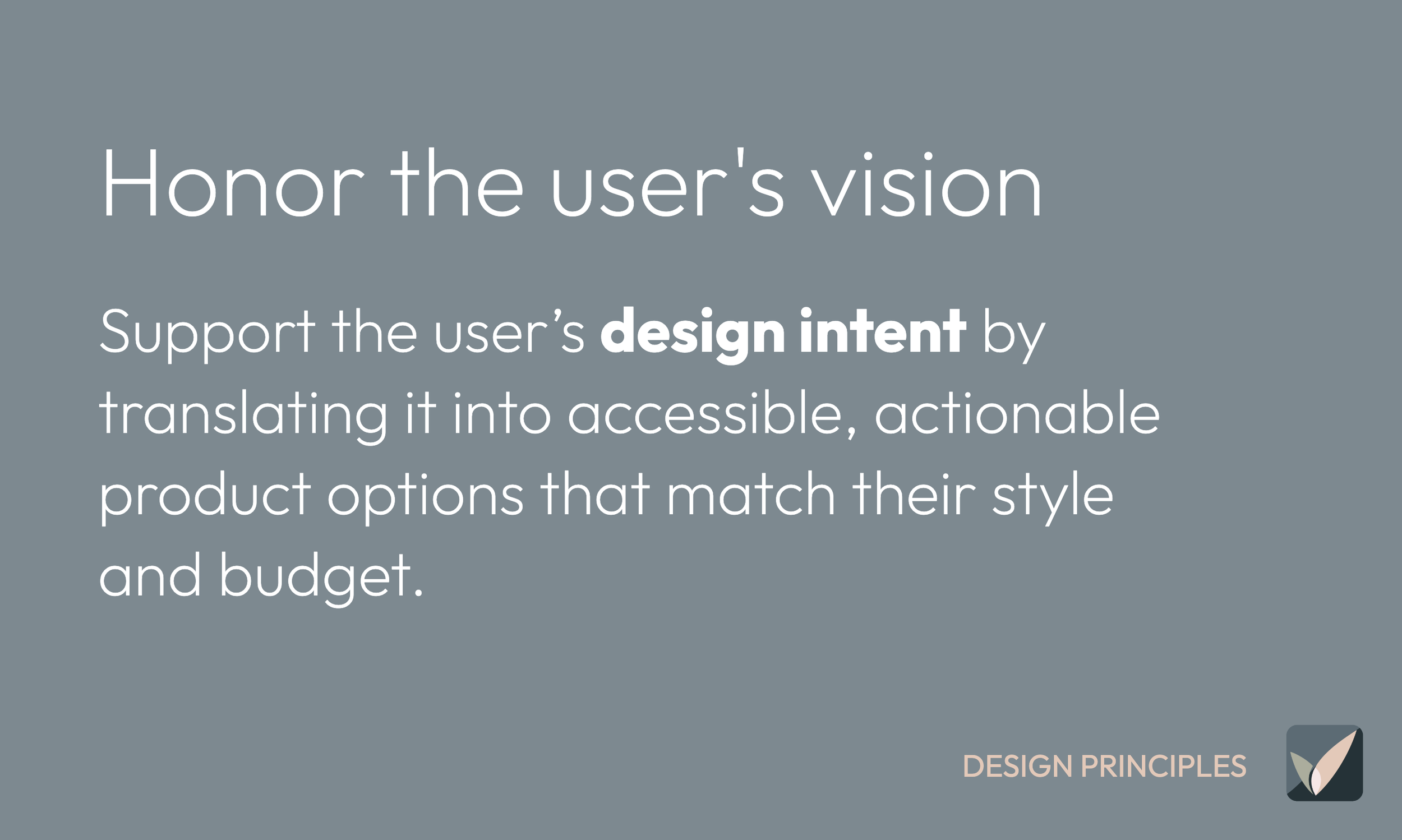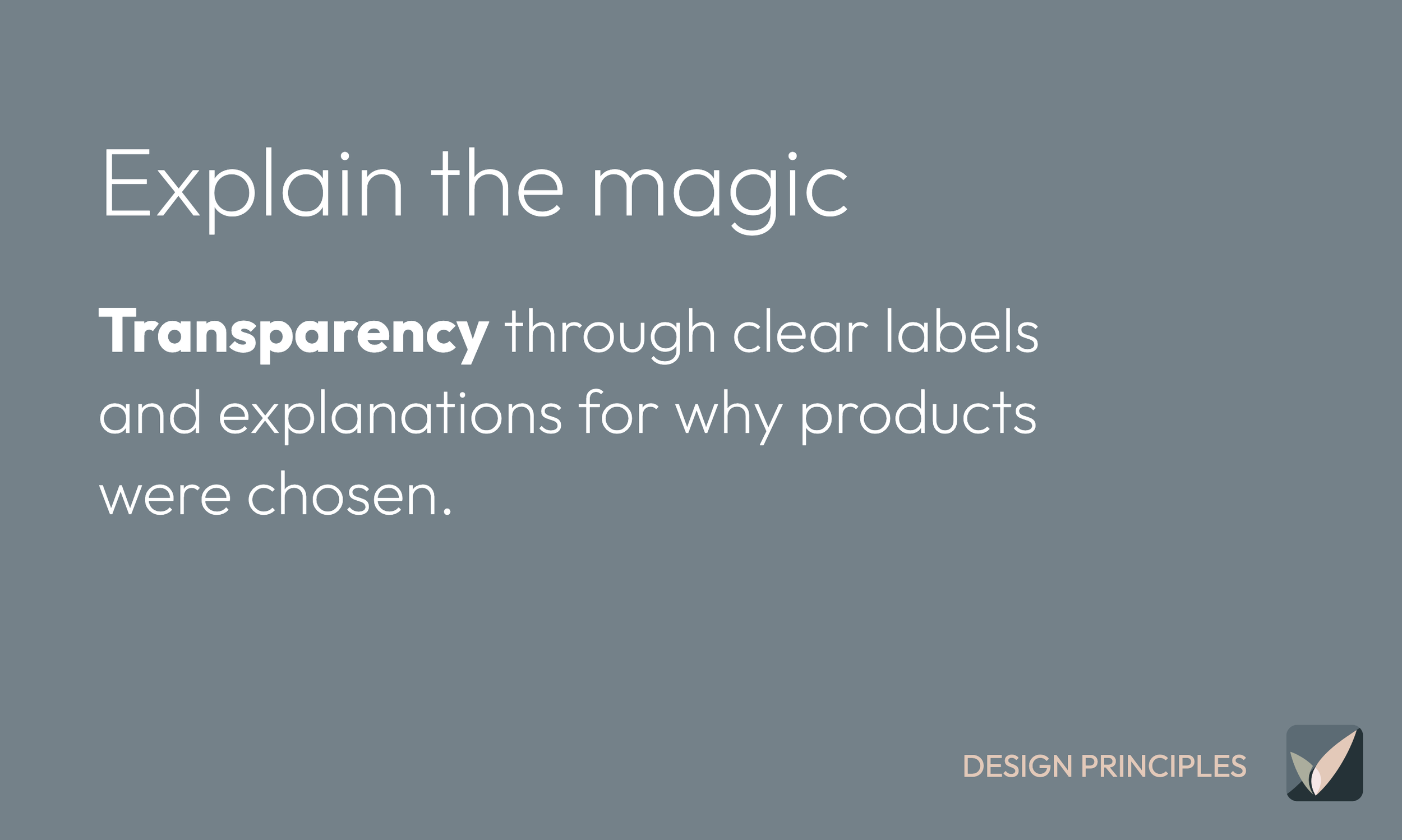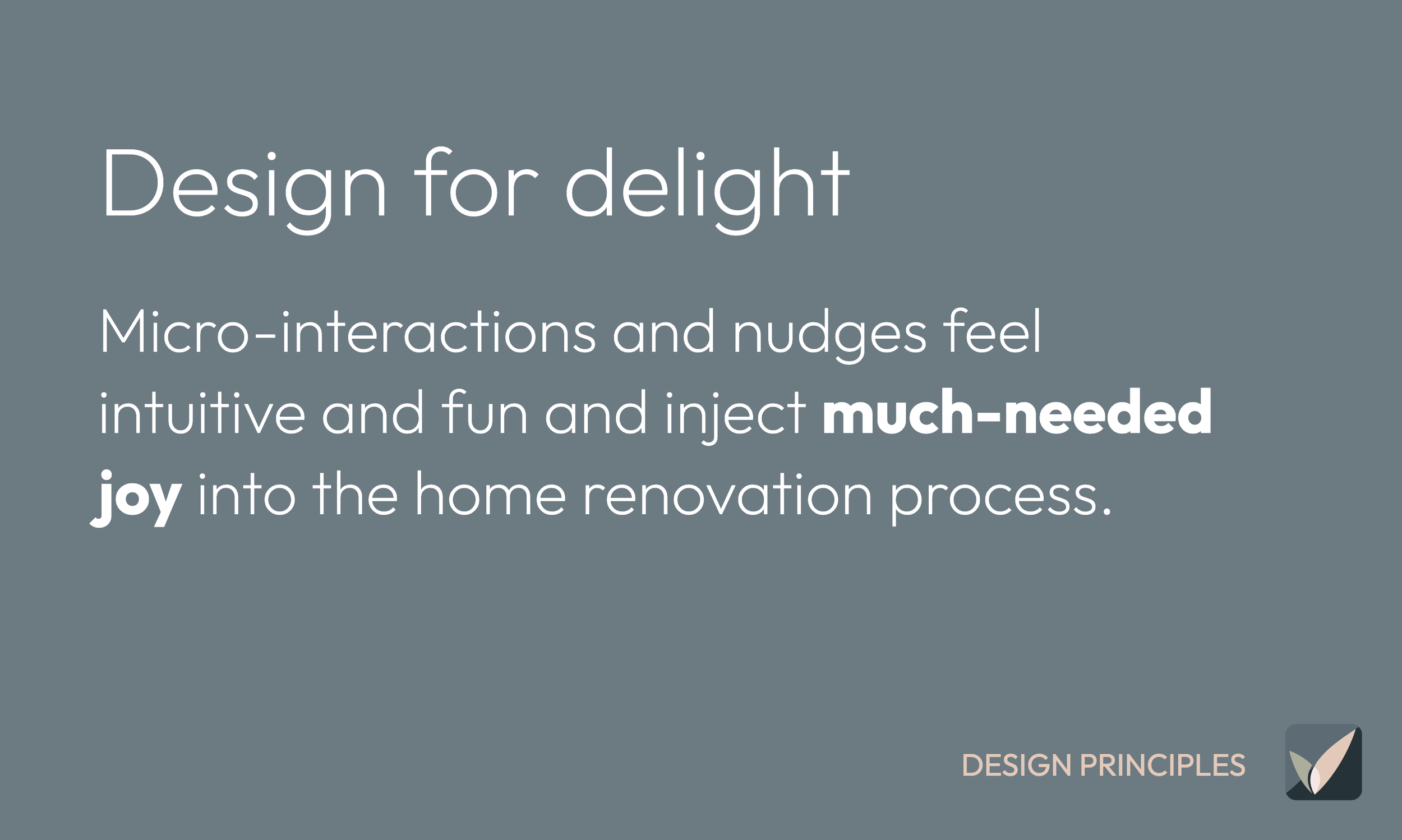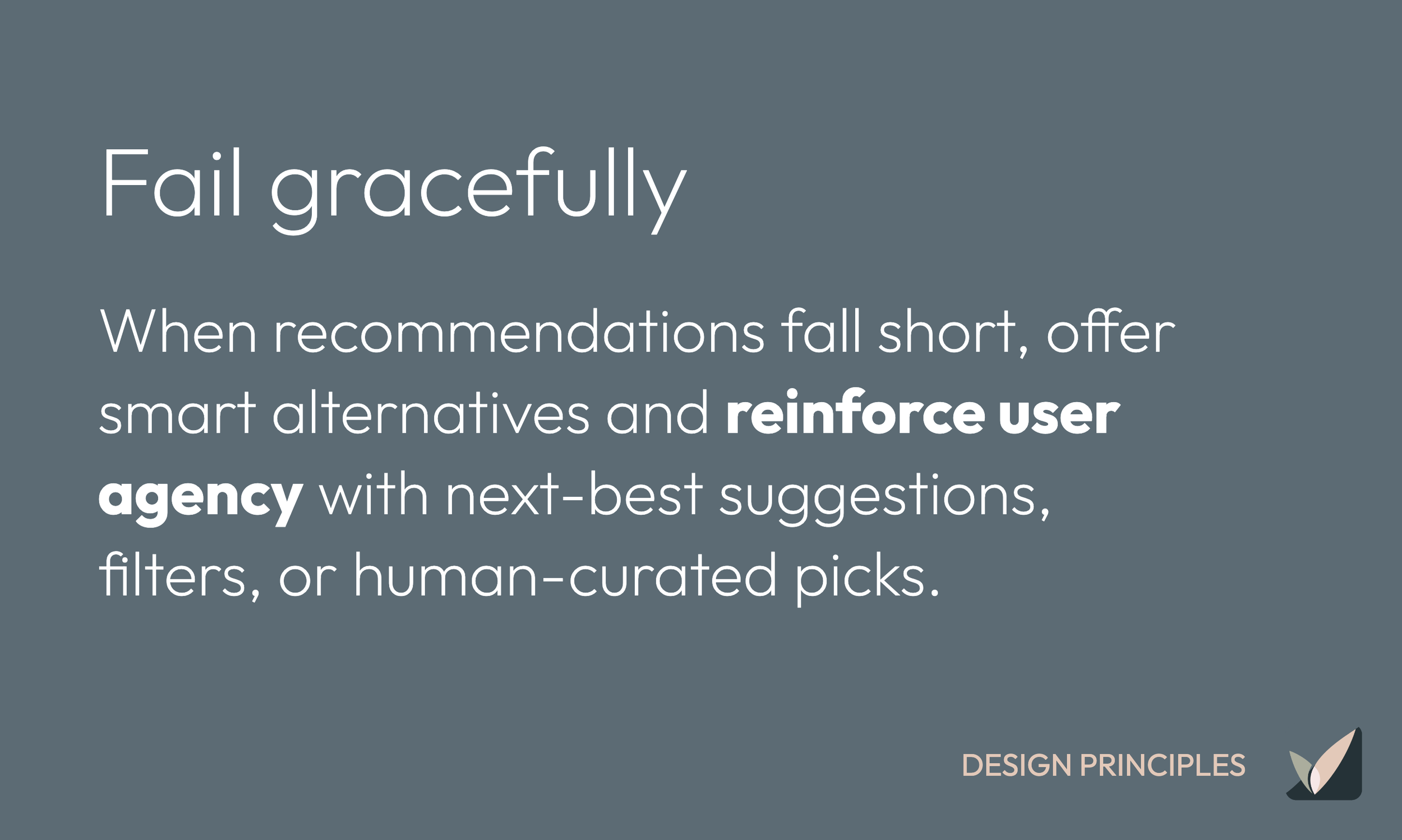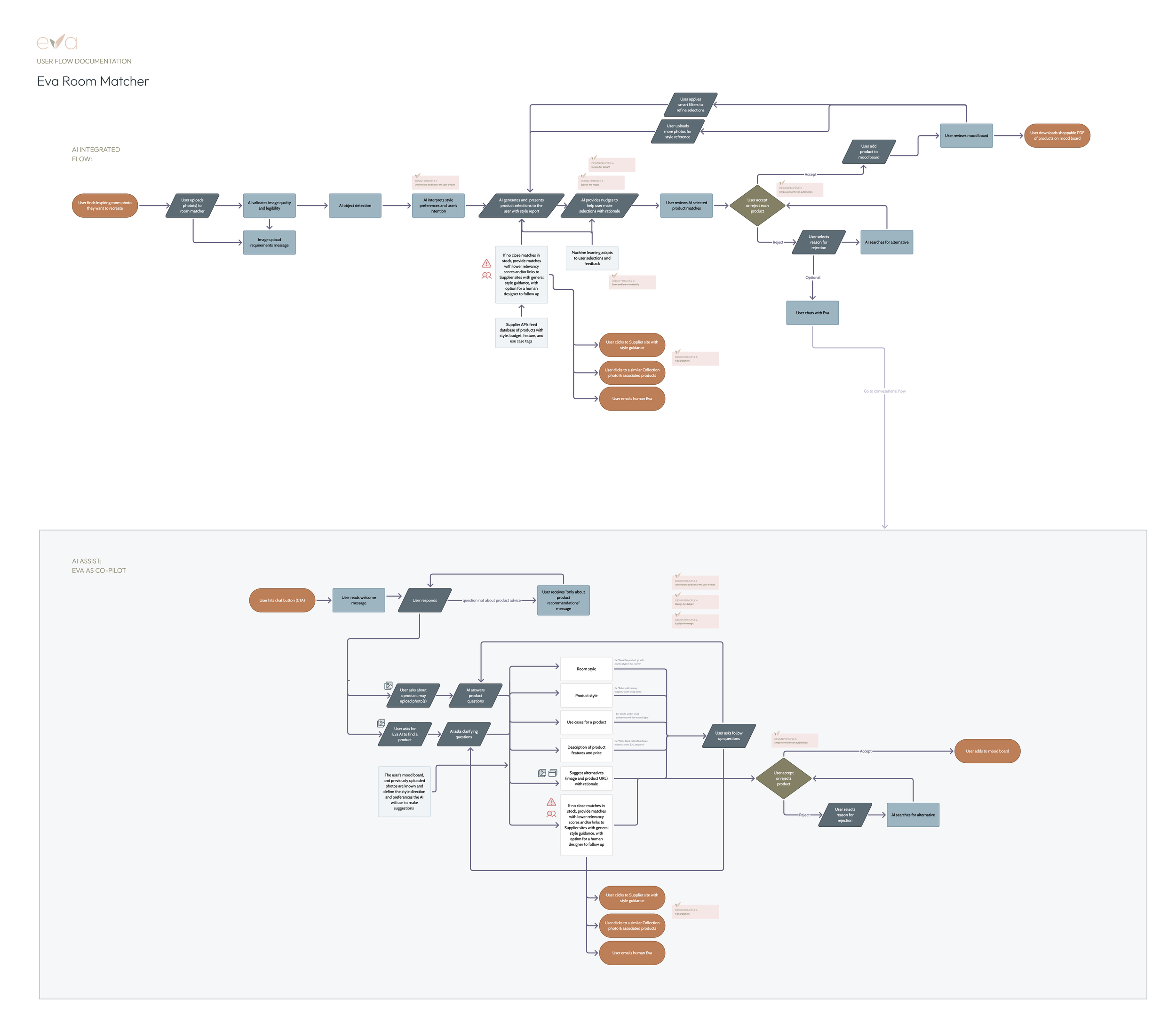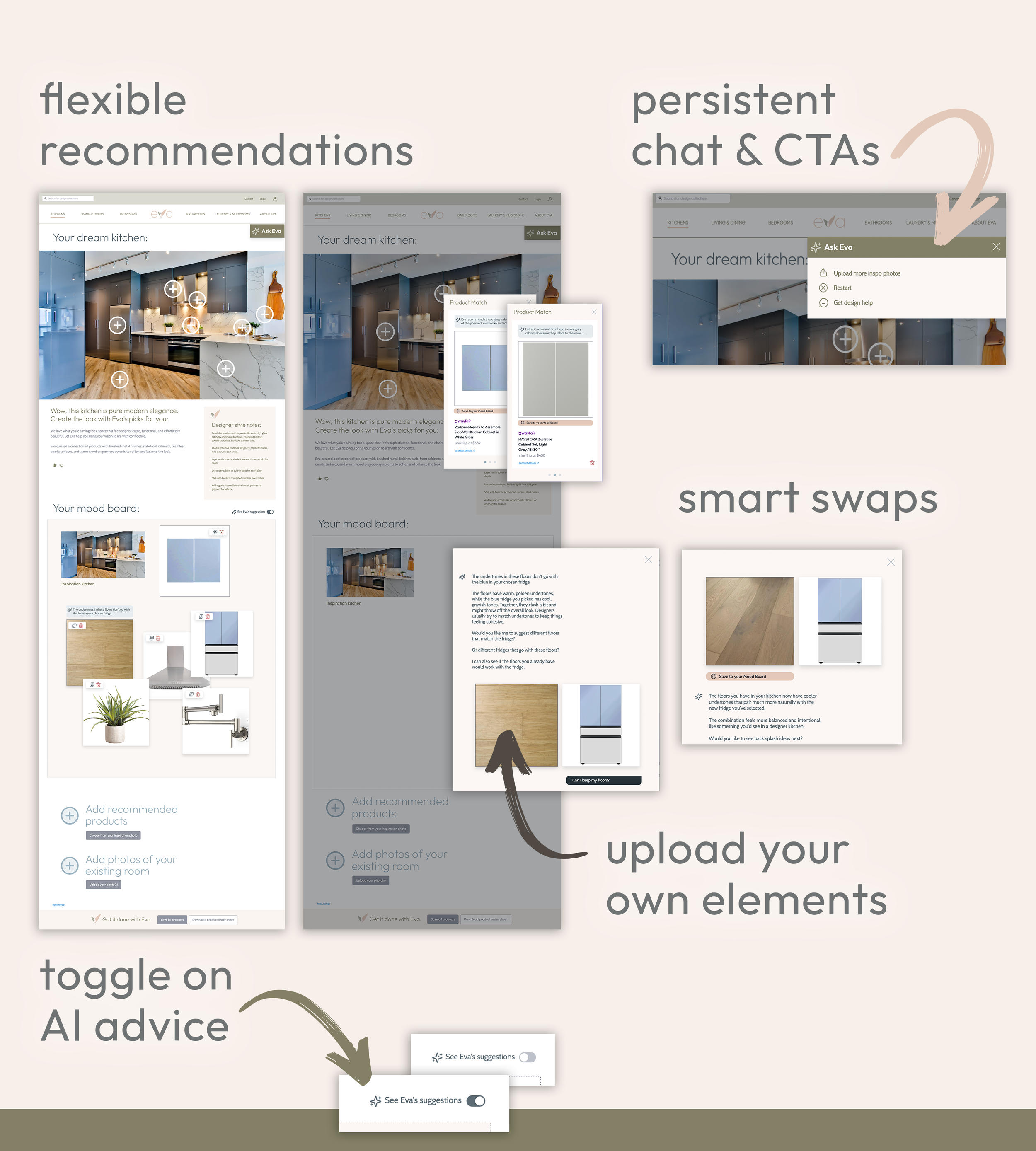Meet Eva: an AI-powered shopping experience that simplifies home renovations.
Client: Eva / Inspolation, Inc.
AI Strategy, Product Direction & Design: Claire Tomm
From vision to reality.
Eva empowers renovators, realtors and flippers.
Upload an inspiration photo and Eva will identify the style and elements to match them with curated, shoppable products that are budget- and style-aligned. Eva subtly helps users understand and select from product recommendations and avoid costly mistakes. Create a space you love, stress-free.
Designed for impact.
A more immersive, shoppable experience drives business value
Shoppers reduce time spent sourcing products by 80%
250-500 more Eva Pro subscription conversions per month
60% increase in Mood Board creation, a leading indicator for purchases
Additional affiliate revenue from increased purchases doubles ARR
Renovation roadblocks.
Most renovation projects are abandoned because homeowners get stuck.
Inspiration without
action:
Platforms like Pinterest and Instagram offer endless design ideas but rarely provide direct links to purchasable products.
Ineffective
search tools:
Traditional reverse image searches can yield irrelevant or unavailable products and fail to consider factors like budget, location, or current stock.
Decision fatigue and cognitive overload:
The overwhelming number of choices and the complexity of coordinating various design elements can lead to frustration and indecision.
No professional
guidance:
Many users lack access to interior designers, leading to uncertainty and stalled projects when trying to make cohesive design decisions independently.
Eva bridges the gap between inspiration and execution.
AI enhances the user experience:
Understands the user’s intent
Invites the user into an immersive, interactive mood board
Offers timely, friendly, actionable advice
Instant product matching to inspiration.
Renovators find inspiration everywhere. Then what? Eva saves users hours of scrolling and turns a frustrating experience into a magical one.
Professional design guidance.
With the AI-enhanced workflow, users can activate AI nudges to receive expert design suggestions.
Practical purchase options.
Once users finalize their mood board, they can download a sourcing sheet with in-stock products and get an exclusive trade discount.
Design principles for a human-centered approach.
Users aren’t just shopping, they’re building a vision of home.
This AI system influences real, and really expensive, purchasing decisions. Trust, transparency, accuracy, and clarity are non-negotiable.
The principles below serve as a strategic guidepost for user flows, interfaces, and MVP features. Each interaction should reinforce these principles to ensure the product is not only functional, but valuable, enjoyable, and responsible.
The Design Principles translate into a seamless user flow.
Values-backed artifacts align stakeholders and the engineering team on the human-centered experience we aim to create.
AI-powered solutions to renovation challenges.
Upload inspirational room photos.
AI computer vision analyzes the room for style and elements to understand the user’s intent and stylistic preferences.
Discover personalized product recommendations.
The AI-powered product matching engine identifies similar products in the Eva database. Accompanied by clear, AI-generated explanations, suggestions provide transparency into the selection process and empowers users to make informed decisions with confidence.
Get designer advice to bring it all together
Users can activate AI nudges on their mood board, providing real-time design suggestions, just like having a personal interior designer at your side. These insights help ensure cohesive and harmonious selections, guiding users to make smart product swaps without feeling intimidated or judged.
AI-powered design assistant helps users take action.
This project demonstrates our ability to strategically apply AI to solve real human pain points.
We were able to bring clarity to a space often defined by overwhelm by leveraging AI frameworks, aligning product vision with user behavior, and balancing thoughtful feature design with intuitive user flows. Tools like Visily, Figma, Magic Patterns, Lovable, Jitter, and Screen Studio enabled rapid iteration and effective storytelling, while cross-functional leadership ensured every element supported both business strategy and the end-user experience.












